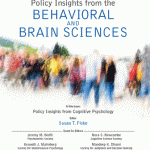Learning to Use fMRI in Organizational Research
Neurofinance is a relatively new area of research that strives to understand financial decision making by combining insights from psychology and neuroscience with theories of finance. Using behavioral experiments, neurofinance studies how we evaluate information about financial options that are uncertain, time-constrained, risky, and strategic in nature and how financial decisions are influenced by emotions, psychological biases, stress, and individual differences (such as gender, genes, neuroanatomy, and personality). Ewa A. Miendlarzewska of the University of Geneva, Michael Kometer of ZZ Vermogensberatung and Kerstin Preuschoff of the University of Geneva recently published an article titled “Neurofinance” in Organizational Research Methods. Here, in a post that originally appeared at the Management INK blog, they reflect on the methodology and significance of this research. The paper is free to read for a limited time.
Decision-making is a ubiquitous feature of human behavior and a topic of study found in many different disciplines. In the comparatively new field of neuroeconomics, theoretical models from economics and psychology are combined with measures of brain activity to explore decision-making. For instance, neuroscience has established the role of the neurotransmitter dopamine in reward processing. Within neuroeconomics, behavioral models of utility have been applied to neural data from dopaminergic regions, so as to examine said models’ validity and violations. The result is that, in neuroeconomics, neuroscientific tools bring us a step closer to observing hidden, internal states.
Neuroeconomics has embraced the use of non-invasive neuroimaging methods such as (functional) magnetic resonance imaging, or fMRI. MRI was originally used in medicine where – to this day – it serves as a powerful, non-invasive diagnostic means of looking into the body, including the brain. It has since evolved into an attractive tool for non-clinical behavioral scientists. Changes in neural signals observed can reflect differences in, for instance, emotional states, and can also provide a neural basis for individual behavioral differences. These insights may supply the organizational psychologist with an understanding of human behavior grounded in physiology, which in turn may better inform an organizational setting.
In this paper, we provide a primer on the use of fMRI in organizational research. First, we consider that the method presents a significant barrier to entry; and second, we drafted this paper in a spirit of inclusion, to encourage researchers unfamiliar with fMRI to overcome a first hurdle in understanding the method. Guided by those two premises, we endeavored to write a cogent introduction aimed at organizational psychologists.
While we strove to write a concise paper on fMRI methods, we also address the caveats fMRI presents. In recent years, the method’s statistical analyses have come under fire, which has induced skepticism towards fMRI in lay-people and researchers alike. In our view, public scrutiny of fMRI has been a welcome development in the field as it has led to a refinement of data analyses methods. In our paper, we explicitly address these potential pitfalls in study design and analysis and offer solutions to mitigate them.
Challenges notwithstanding, fMRI has increased in popularity with good reason. The method provides a non-invasive means by which to glimpse the inner workings of the brain in response to its environment. For a behavioral researcher, whose putative prime mover is the brain, fMRI can edify, or indeed edit, theoretical models of decision-making and social cognition. And with that, our hope is that this paper can be a useful first contact with the necessary knowledge to envisage an fMRI study.







































































































